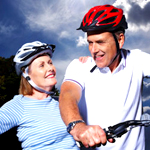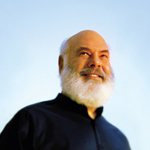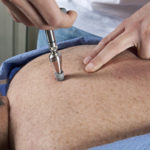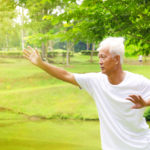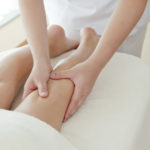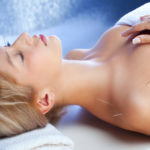Reflexology
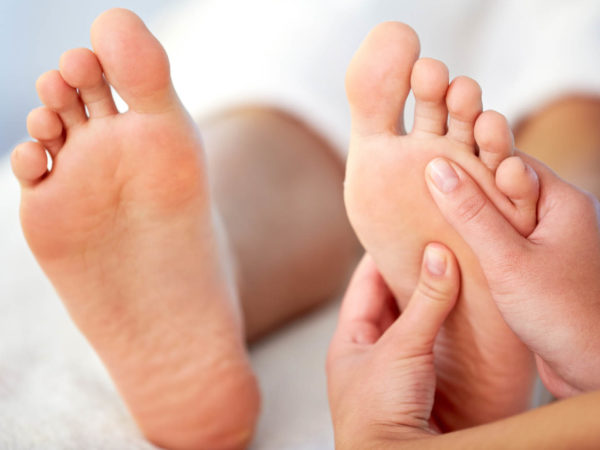
What Is Reflexology?
Reflexology (or foot reflexology) is a therapy based on the principle that there are small and specific areas of innervation in the hands and feet that correspond to specific muscle groups or organs of the body. In this system, the nerve endings in the extremities provide a “map” of the rest of the body. Examples are the base of the little toe representing the ear, or the ball of the foot representing the lung. Through the application of pressure on particular areas of the hands or feet, reflexology is said to promote benefits such as the relaxation of tension, improvement of circulation, and support of normalized function in the related area in the body.
What Health Concerns Is Reflexology Used For?
In broad terms, reflexology is intended to reduce generalized stress and help the body achieve a state of deep relaxation and homeostasis (that is, optimal balance of the body’s biochemical and other systems). Yet efficacy studies are few, and a 2009 systematic review of randomized controlled trials conducted by researchers at the Peninsula Medical School in Exeter, UK, concluded that “the best evidence available to date does not demonstrate convincingly that reflexology is an effective treatment for any medical condition.”
However, since having the feet or hands rubbed is an enjoyable and relaxing experience for most people, there is little doubt that hand and foot reflexology can promote stress relief and a sense of well being in much the same way as any other form of massage. This therapy may be an especially useful complementary treatment for neuropathy of the legs, feet and toes. It can also be useful for sore hands and feet after a workout, running or taking a long walk.
What Should One Expect On A Visit To A Practitioner Of Reflexology?
A typical reflexology session runs from thirty to sixty minutes. Shoes and socks are removed, and the client is made comfortable, usually by sitting or reclining. Some reflexologists offer a foot bath at the beginning of the session, however, no lotions or oils are used. Pressure is applied in thumb-and-finger “walking” patterns, resulting in gentle stretching and massaging of specific zones of the hands and feet that are thought to correspond to body organs. Simple self-care instructions may be discussed at the completion of the session.
Are There Any Health Conditions For Which Reflexology Should Be Avoided?
Obviously, open sores to the hands and/or feet would be a reason to avoid reflexology. Acute injuries also must be handled with care. Anyone with active blood clots should avoid rubbing near the area of the clot. Burns, wounds, gout and infections to the hands or feet should also limit the use of reflexology. Lower extremity swelling or chronic skin changes that are a result of vascular problems to the feet should also limit this form of therapy. Recent removal of a cancerous tumor or other surgical procedures, such as wart removal, also make reflexology inadvisable. There is some evidence that rubbing of the feet during pregnancy might stimulate contractions, and so should be avoided in the later stages of pregnancy.
Is There A Governing Body That Oversees Or Credentials Practitioners Of Reflexology?
The American Commission for Accreditation of Reflexology Education and Training (ACARET) sets the standards for education required for the reflexology profession. It also credentials those involved with educating students of reflexology. The American Reflexology Certification Board (ARCB) has a three-part examination process to ensure the practitioner has met the standards set by the board. In order to be certified through ARCB, a minimum of 110 hands-on training hours must be completed.
To remain certified by the ARCB, an annual fee is collected and 12 hours of continuing education every two years must be documented. This certification is voluntary and not mandatory to practice reflexology.
However, certification is not a license to practice reflexology. Laws regarding licensing to perform massage and touch therapies are set at the local and state level.
How Does One Get In Touch With A Practitioner Of Reflexology?
The ARCB and the International Institute of Reflexology have a referral lists on their websites, or visit www.reflexology-research.com.
What Is Dr. Weil’s View On Reflexology?
Dr. Weil thinks hand and foot reflexology is of great value for relieving generalized foot pain caused by cramped or chronically tight muscles. He also believes that, like other forms of massage, it may release endorphins, leading to pleasurable, relaxed states.
Until better evidence is published in peer reviewed journals, he remains skeptical of claims that by massaging or applying pressure to specific points on the hands or feet, a reflexologist can alleviate problems in corresponding organs or other systems throughout the body. He has seen no evidence showing that reflexology is effective for pain or any health problems unrelated to the feet and hands. He urges caution with regard to claims that reflexology can cleanse the body of toxins, increase circulation, promote weight loss, or successfully treat earaches, hemorrhoids, emphysema, heart disease, thyroid disorders or any other health condition.


